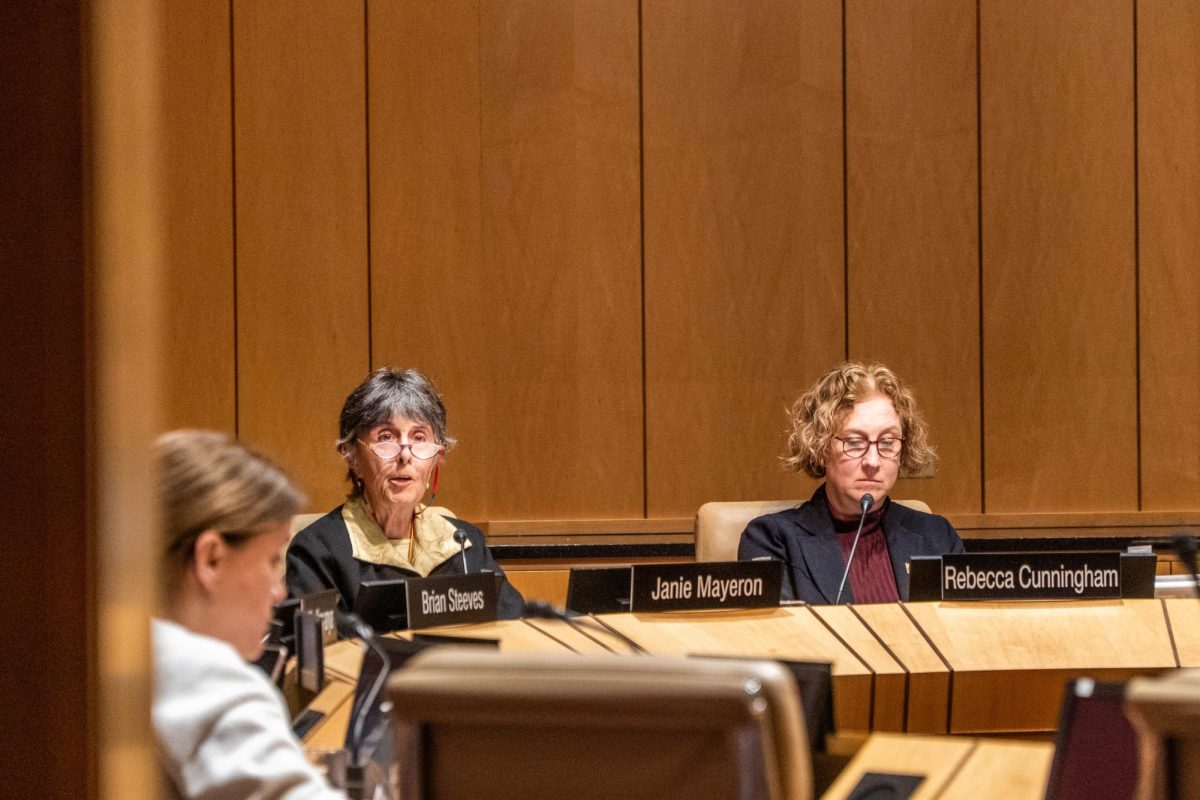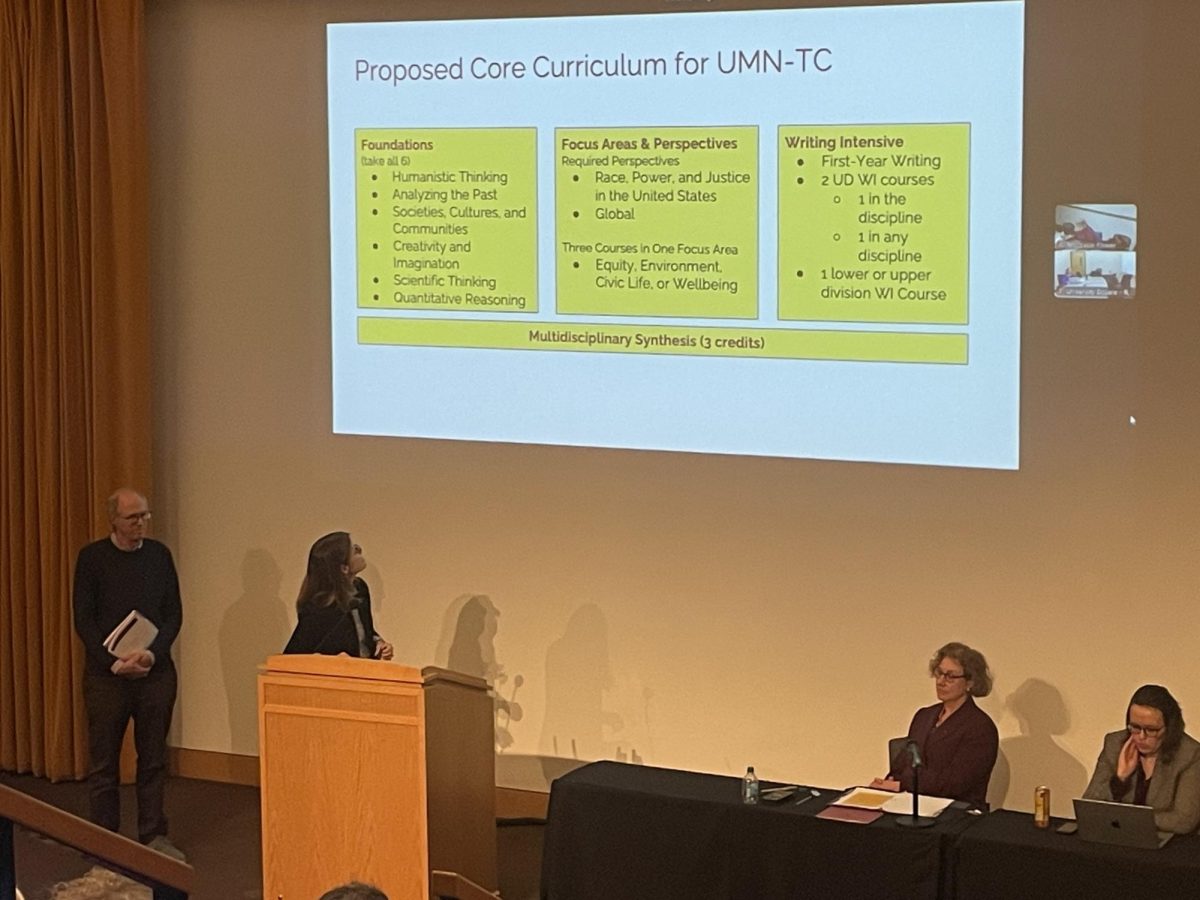At a seminar on Monday, an expert shared the University of Minnesota Extension’s climate-ready woodlands program.
The list of tree species the program provided would help woodland stewards and owners in northern Minnesota better understand what species they can plant to help forests adapt to the changing climate.
Anna Stockstad, a forester and the seminar’s speaker, said she was eager to share her expertise on the climate-ready woodlands program with more than 50 people from Minnesota and surrounding areas attending the Zoom seminar.
“The goal of this program is to provide robust adaptation options to woodland stewards all across northern Minnesota, specifically related to species selection and thinking about what species they could or should retain on their landscape,” Stockstad said.
Stockstad said her team is updating the website and finalizing the lists of tree species.
Who the Climate-Ready Woodlands Program Will Benefit
Stockstad said the intended audience for the climate-ready woodlands program is woodland stewards in Minnesota.
Woodland stewards could also be called family woodland owners, Stockstad said. They are private landowners, often families, who own or care for woodlands.
Ownership does not always mean stewardship, according to Stockstad, and people do not have to own land to be stewards of the land.
“We’re really just renting the land for a period of time, no one truly owns it,” Stockstad said. “We’re just caring for the woods in the time we have with it.”
In Minnesota, 33% of the forest land is owned by family woodland owners, which equates to 5.4 million acres, according to Stockstad. Extension forestry tries to meet this large group of landowners and caretakers in their diverse goals and values.
Climate change touches on every aspect of how woodland stewards care for their forests, including wildlife, timber production or invasive species, Stockstad said.
“We developed this program in the first place because we were really hearing demand for climate-ready information, especially for small acreage land owners,” Stockstad said.
Small acreage landowners are looking for recommendations on how to help their woodlands adapt to a future climate, Stockstad said. They are also interested in how to care for wildlife and pollinators in their woods.
The first version of the program was published in September 2023, and now members of the program are working on updating the methodology and creating a new version of the lists based on feedback from colleagues and users of the lists, Stockstad said. This summer, they are working on preparing everything for final review and publishing a new website as soon as possible.
The lists are developed using model-based methodology with data from the Minnesota Department of Natural Resources and USDA Forest Service.
The lists are recommendations for climate-ready tree and native plant species, as well as species to consider for refugia, according to Stockstad. Refugia is the idea of managing an area that can buffer the impacts of climate change to protect vulnerable species.
An example of a site for refugia is along the north shore of Lake Superior because it can buffer the impacts of climate change, Stockstad said.
The climate-ready woodlands program started around the idea of rewilding, promoting diversity in the underlying layer of vegetation in forests, which helps with biodiversity and promotion of soil, Stockstad said.
Not every woodland steward is interested in climate adaptation, so these lists are not for everyone, Stockstad said. They are also always meant to be used in collaboration with a forester.
Eco-Anxiety about Climate Change
It can be easy for woodland stewards to feel like they cannot do anything for climate change, Stockstad said.
58% of climate-ready woodlands participants feel extremely concerned about climate change, and it is their top management priority, according to Stockstad.
“We hope that through this climate-ready woodlands program, we’re able to help them feel empowered by giving them hope and agency,” Stockstad said.
Uncertainty and risk are inherent parts of a model-based approach, so the best approach is one that incorporates multiple adaptation strategies, Stockstad said. She added people should not try one strategy but should experiment and see what works best, which may be a lifetime act.
Planting the wrong species on the wrong site, even if it was given a good rating, does not guarantee its survival, according to Stockstad.
Expansion and Continuation of the Climate-Ready Woodlands Program
Stockstad said her colleague Angela Gupta launched science projects to identify the presence of new-to-region migration potential species, which are species not currently native to Minnesota but may be adapted to the climate in the future.
Program coordinators are also working with the Urban Forestry Lab at the University to implement experimental planting of some of the future climate-adapted species in a controlled setting to determine the survival and performance of future climate-adapted species, according to Stockstad.
Meeting attendees shared contact information and built connections with each other at the end of the seminar in an effort to learn how to spread the word about the program and become collaborators.
Executive Director of the University’s Institute on the Environment Jessica Hellmann said University Extension programs bring University resources, expertise and training to communities across the state.
“Extension programs are really well suited to both pursue climate adaptation science and to convey it to communities across the midwest,” Hellmann said.














